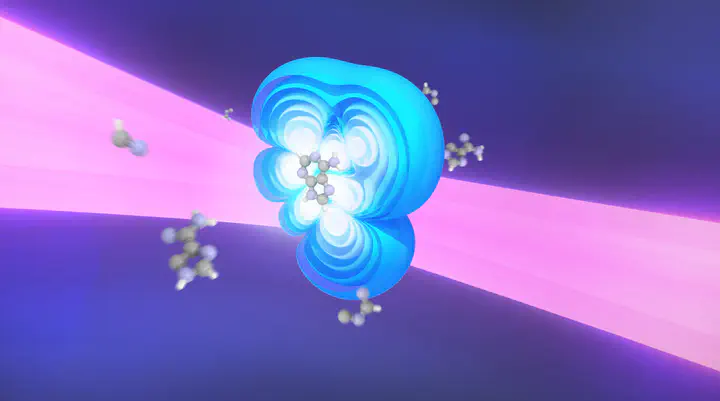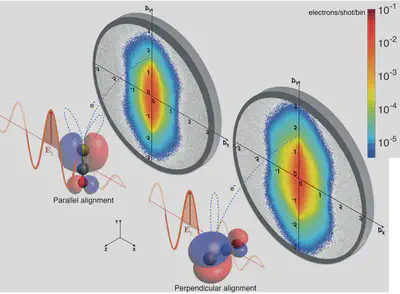Strong field and attosecond physics in molecules
 Copyright UDG
Copyright UDGThe use of high-intensity infrared/deep-infrared laser pulses on gas targets provides access to a rich spectrum of structural and dynamical information. In pump-probe configurations, this opens the door to real-time observation of ultrafast electronic dynamics, allowing exploration of a wide range of fundamental photo-physical and photo-chemical processes in the time domain. These include correlation effects such as Auger and shakeup processes, as well as photoemission from atoms and molecules, the intrinsic delay of which can be measured with attosecond precision (1 as =
Exploring Ultrafast Phenomena and Intense Laser Interactions
In laser-induced electron diffraction (LIED), electrons ripped off a molecule by the field are accelerated into the vacuum and subsequently driven back to rescatter with it. The photoelectrons emerging from such a process carry information on sub-cycle electron dynamics as well as on the electronic and structural configuration of the molecule. We simulate ab-initio the full many-electron dynamical process, including ionization, rescattering, and photoelectron detection with our implementation in the OCTOPUS code. Our approach provides an unbiased baseline beyond the widely employed single-active electron approximation (SAE), where only a single valence electron is considered. This can support existing experiments or imagine and predict new ones.
